The Interton Video Computer 4000
The Interton Video Computer 4000 is a cartridge-based game console produced in 1978 in Germany. The unit was released in Germany, Great Britain, France, Spain, Austria, The Netherlands, and Australia. This console is the successor of the Interton Video 3001.
The VC4000 uses ROM cartridges to play games, and has two 12-button joysticks. It uses the Signetics 2636 Video Controller and a Signetics 2650A CPU running at 0.887MHz. The VC4000 is software compatible with the Audiosonic 1292 Advanced Programmable Video System and the Voltmace Database. Unfortunately different manufacturers of the VC4000 produced slightly different versions of the cartridges, and even though the software is compatible, sometimes the cartridges are not due to the different form-factor.
Game List
- Car Races
- Blackjack
- Paddle Games
- Tank Battle
- Mathematics I
- Mathematics II
- Air/Sea Battle
- Memory/Flag Capture
- Intelligence I
- Winter Sports
- Hippodrome
- Hunting
- Chess
- MotoCross
- Intelligence II
- Intelligence III
- Circus
- Boxing Match
- Outer Space Combat
- Melody/Simon
- Intelligence IV/Reversi
- Chess II
- Pinball
- Soccer
- Bowling/Ninepins
- Draughts
- Golf
- Cockpit
- Metropolis/Hangman
- Solitaire
- Casino
- Invaders
- Super Invaders
- Space Laser
- Rodeo
- Backgammon
- Monstar Man
- Hyperspace
- Basketball
- Super-Space
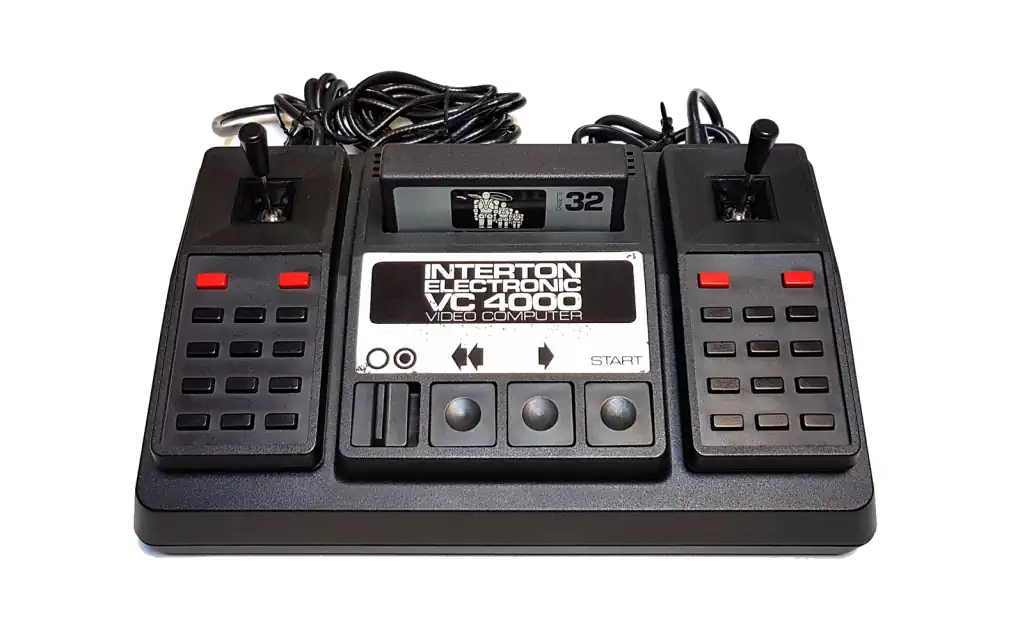
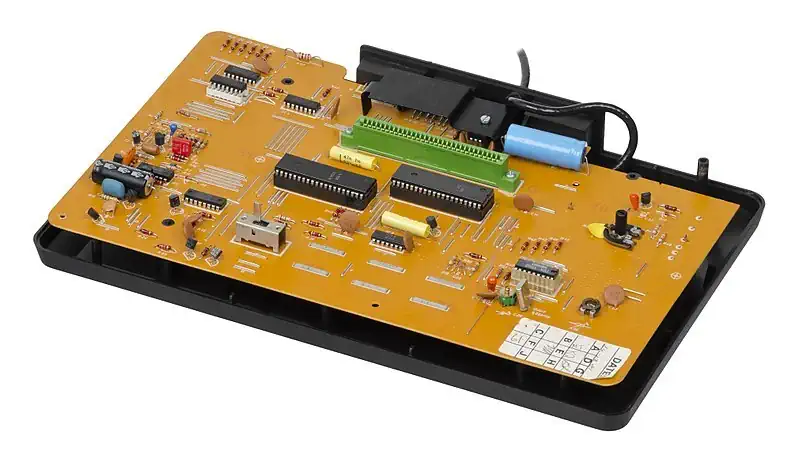
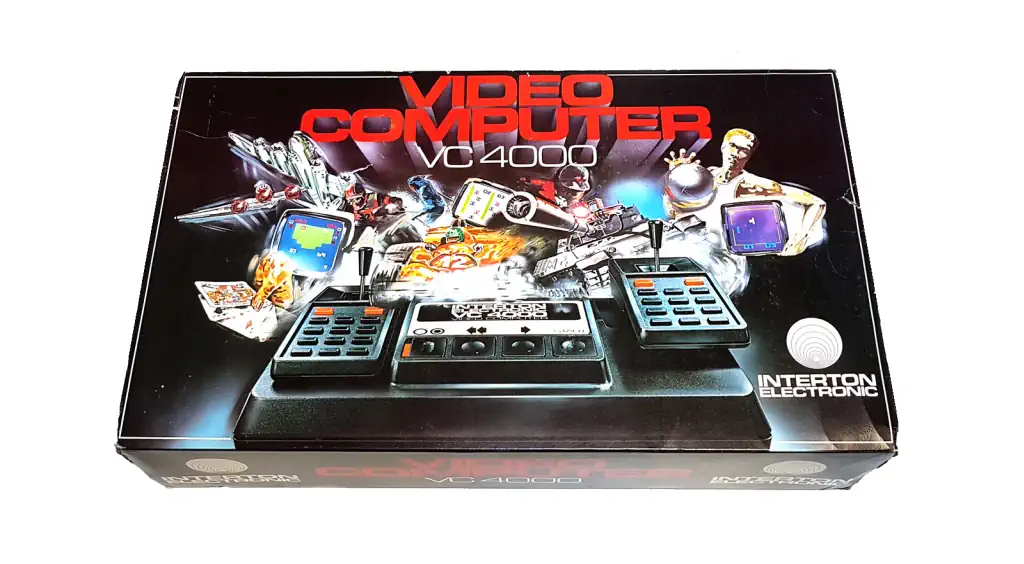
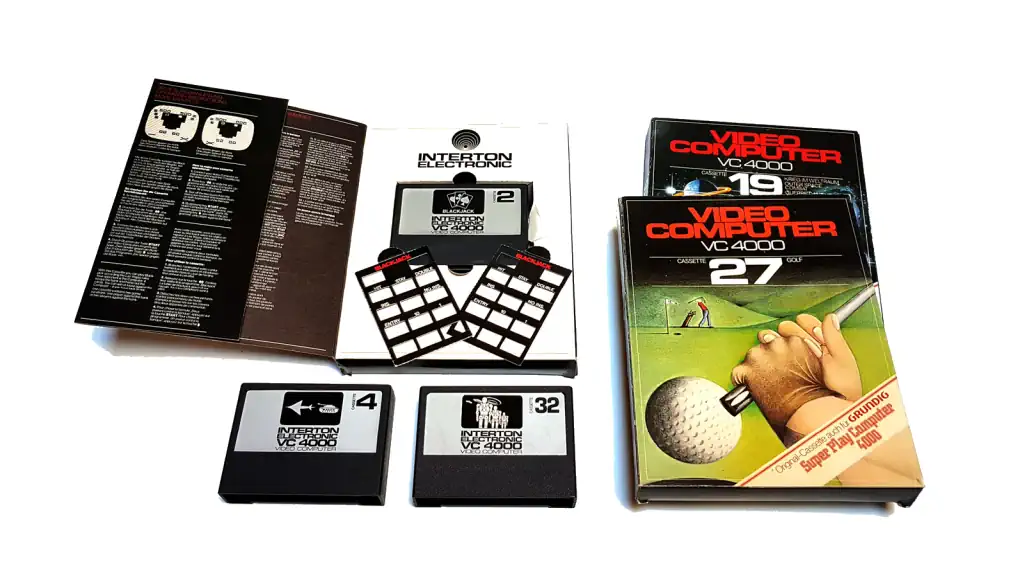
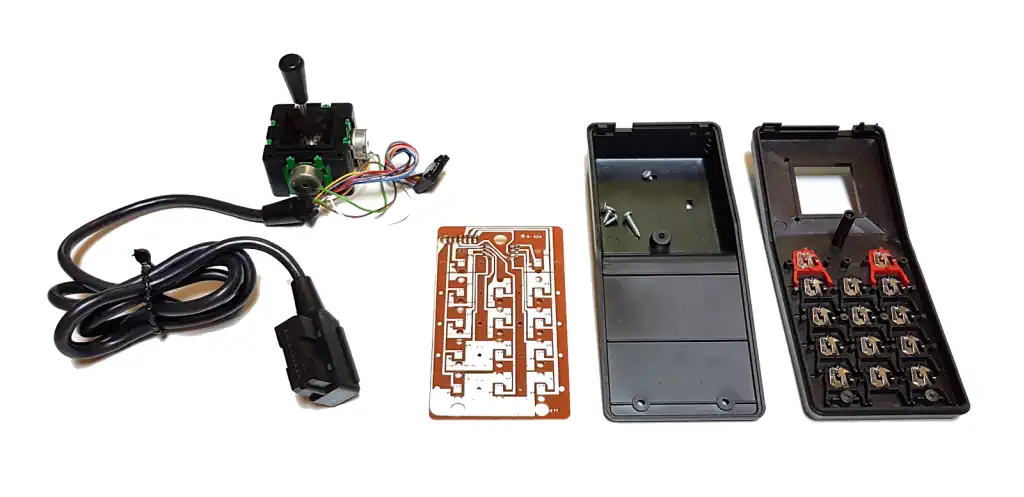
Signetics/Philips 2650 CPU
The Signetics 2650 was a 8-bit microprocessor produced by Signetics in 1975. It came in a 40-pin DIP package, had 15 address lines and could run at 1.2MHz.
The CPU was designed in 1972 by a team led by John Kessler of IBM, to compete with the minicomputers of that time. The CPU was produced using the NMOS process which used less power and produced less head than PMOS CPU designs. The base for the design was the 1130, which was a 16-bit minicomputer released in 1965.
The Signetics 2650 was one of the most advance CPUs of 1972. It easily outperformed the Intel 4004 and 8008. Due to production delays the CPU was not formally released until 1975, by which time other CPUs had been introduced that were designed from the ground up, rather than based on a mini-computer design. In 1975 Signetics was bought by the Dutch electronics company Philips.
The Signetics/Philips 2650 has four main general purpsoe registers (REG0..REG3) and three Alternate general purpose registers (REG1'..REG3'). It has one instruction addresss register, and a return address stack of 8 15-bit words. The Alternate registers could be switched between with a single instruction that controlled a bit in the status register called PSW. This allowed rapid switching of values during subroutines, interrupt handling and OS level task switching.
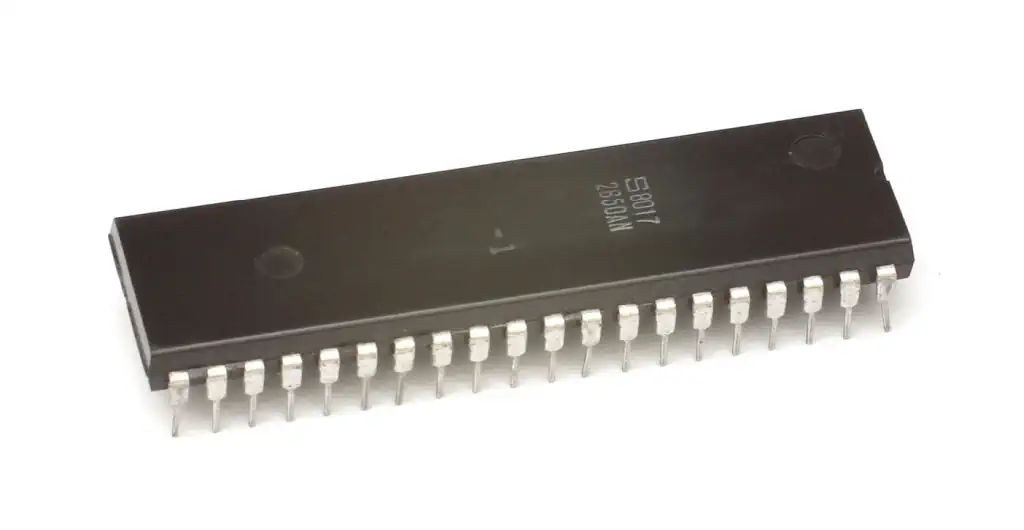
The Signetics 2636 Video Controller
The 2636 PVI is capable of generating a single square wave frequency which is then fed to other circuits that generate audio effects such as explosions, white noise or beeps.
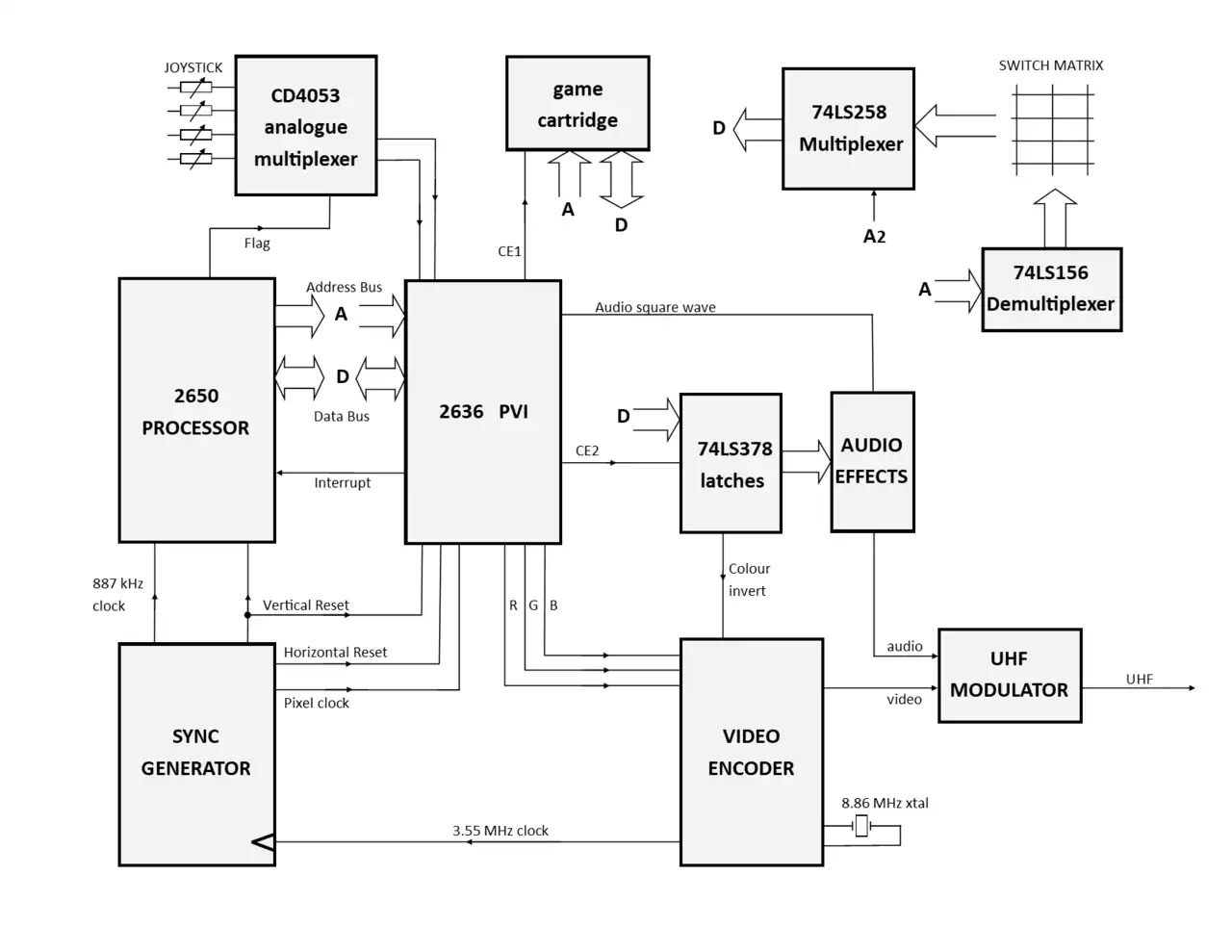
Magnified image of the 2650A die
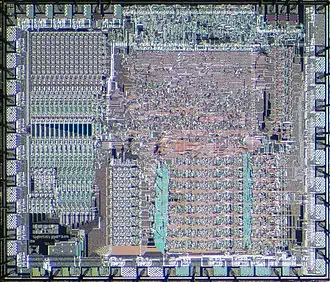
Advertisement for the 2650 CPU
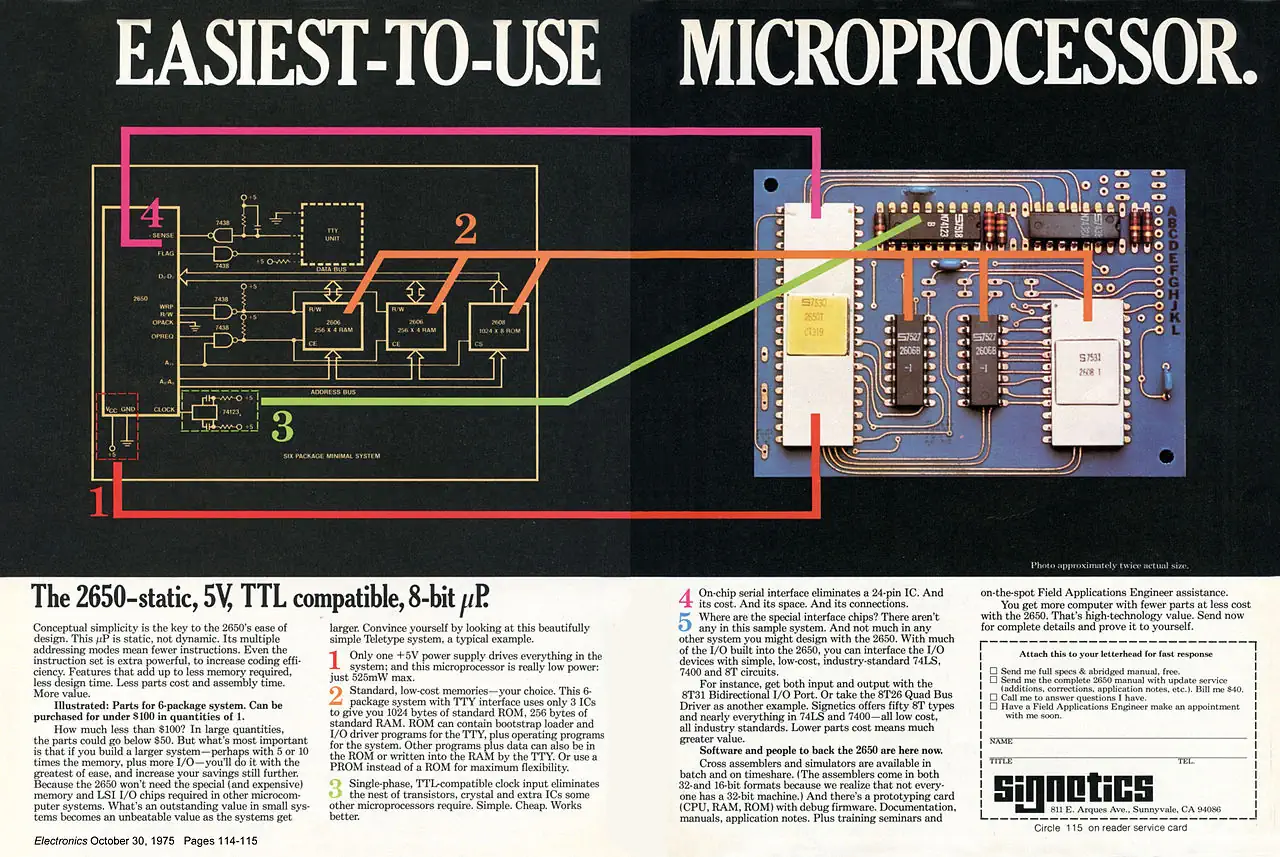
RAM max: n/a
ROM: none
VRAM: none Sound Chip none Sound Single Square wave frequency. Display Chip Signetics 2636 Video Controller Display 218x200 in 8 colors Best Color 8 colors Best Graphics unknown Sprites 4 single color sprites Storage ROM cartridge Original Price DM 298

